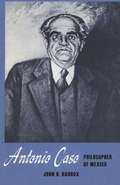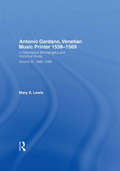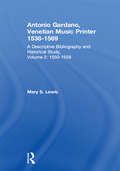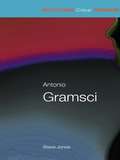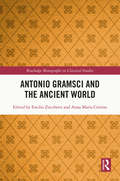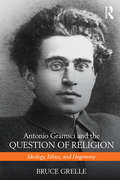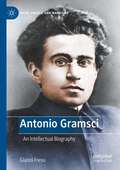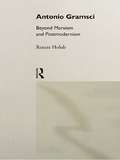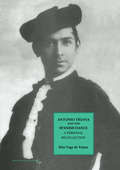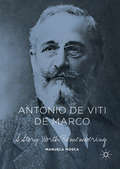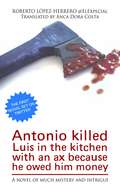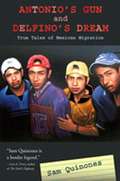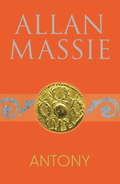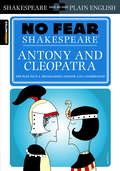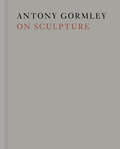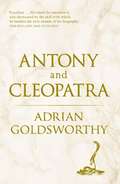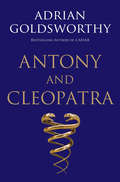- Table View
- List View
Antonio Caso: Philosopher of Mexico
by John H. HaddoxFew men have had as much cultural and educational influence on their own countries as the philosopher and educator Antonio Caso (1883-1946). He was above all a patriot of his beloved Mexico, and he sought to deliver his humanitarian message to his countrymen. In his youth, after the revolt against Díaz, he was a member of the Ateneo de la Juventud, a group that sought to bring Mexico, spiritually and economically, back to the Mexicans. Caso realized that this effort involved the forming of a national consciousness among his people, whom he saw divided by their private and public interests. As an educator of Mexican youth for more than thirty years, Caso sought to imbue in his students the desire to search and to question. He saw education as a perpetual search for truth, and his own life and philosophy reflect this search. He rejected any system that proposed to describe all of reality, and he despised all dogmas-official or unofficial. He particularly fought against positivism and Marxism, systems current in his youth. The first part of this book is an introduction to the philosophical and educational ideas of Caso, as well as to the intellectual and political ideas in his life. Mr. Haddox skillfully shows the development of Caso's ideas and how they took shape from his own reading as well as from the experiences of his age and of his country. The second part contains Mr. Haddox's translations of selections from Caso's writings. They give a moving picture of Caso's hopes for Mexico and for humanitiy.
Antonio Gardano, Venetian Music Printer, 1538-1569: A Descriptive Bibliography And Historical Study, 1550-1559 (A Health Care for Women International Publication #Vol. 2)
by Mary LewisAntonio Gardano's publications are among the most important sources of sixteenth-century music. This final volume in Mary Lewis's three volume set completes the catalogue of Antonio Gardano's publications, covering the years 1560-1569.
Antonio Gardano, Venetian Music Printer, 1538-1569: A Descriptive Bibliography and Historical Study, 1550-1559 (Music Reference Ser. #Vol. 2)
by Mary LewisAntonio Gardano's publications are among the most important sources of 16th-century music. The second volume describes the output of this leading Italian music press in its cultural, bibliographical, and musical context. The first part of the book consists of an overview of Gardano's repertory from the fifties and the cultural and musical milieu in which he worked. It includes discussions of the continuing popularity of his earlier repertory, the music of the younger generation introduced in the fifties, the music of the composers around San Marco, and genres such as the multi-movement madrigal, the canzoni villanesche, instrumental works, and new anthologies. Also discussed are the dating of some undated editions, unconfirmed and doubtful prints, and ordering within the editions. A chapter on binder's copies describes groups of editions bound together by their early owners and serves as a valuable index to the tastes of the collectors. The catalog section covers all Gardano's known publications of the fifties, and provides full titles, bibliographical information, contents with concordant sources for each piece, and locations of individual copies with notes on their bindings, owners' marks, annotations, and other significant characteristics. The catalog is indexed by composer, first line, and short title, and includes a list of primary and secondary sources consulted.
Antonio Gramsci (Critical Explorations In Contemporary Political Thought Ser.)
by Mark McNallyThe thought of Antonio Gramsci continues to enjoy widespread appeal in contemporary political and social theory. This book draws together some of the world's leading scholars on Gramsci to critically explore key ideas, debates and themes in his work in an accessible manner, relating them to contemporary politics and society.
Antonio Gramsci (Routledge Critical Thinkers)
by Steven JonesFor readers encountering Gramsci for the first time, Steve Jones covers key elements of his thought through detailed discussion and studies the historical context of the theorist's thought, offers examples of putting Gramsci's ideas into practice in the analysis of contemporary culture and evaluates responses to his work. Including British, European and American examples, key topics covered here include: * culture* hegemony* intellectuals* crisis* Americanization. Gramsci's work invites people to think beyond simplistic oppositions by recasting ideological domination as hegemony: the ability of a ruling power's values to live in the minds and lives of its subalterns as a spontaneous expression of their own interests Is power simply a matter of domination and resistance? Can a ruling power be vulnerable? Can subordinates find their resitance neutralized? and What is the role of culture in this? These questions, and many more are tackled here in this invaluable introduction to Gramsci.
Antonio Gramsci and the Ancient World (Routledge Monographs in Classical Studies)
by Emilio Zucchetti Anna Maria CiminoAntonio Gramsci and the Ancient World explores the relationship between the work of the Italian Marxist thinker Antonio Gramsci and the study of classical antiquity. The collection of essays engages with Greek and Roman history, literature, society, and culture, offering a range of perspectives and approaches building on Gramsci’s theoretical insights, especially from his Prison Notebooks. The volume investigates both Gramsci’s understanding and reception of the ancient world, including his use of ancient sources and modern historiography, and the viability of applying some of his key theoretical insights to the study of Greek and Roman history and literature. The chapters deal with the ideas of hegemony, passive revolution, Caesarism, and the role of intellectuals in society, offering a complex and diverse exploration of this intersection. With its fascinating mixture of topics, this volume will be of great interest to students and scholars of classics, ancient history, classical reception studies, Marxism and history, and those studying Antonio Gramsci’s works in particular.
Antonio Gramsci and the Question of Religion: Ideology, Ethics, and Hegemony
by Bruce GrelleAntonio Gramsci and the Question of Religion provides a new introduction to the thought of Gramsci through the prisms of religious studies and comparative ethics. Bruce Grelle shows that Gramsci’s key ideas – on hegemony, ideology, moral reformation, "traditional" and "organic" intellectuals – were formulated with simultaneous considerations of religion and politics. Identifying Gramsci’s particular brand of Marxism, Grelle offers an overview of Gramsci’s approach to religion and applies it to contemporary debates over the role of religion and morality in social order and social change. This book is ideal for students and scholars interested in Gramsci, religion, and comparative ethics.
Antonio Gramsci: A Pedagogy To Change The World (Critical Studies of Education #5)
by John D. Holst Nicola PizzolatoThis book is a collection of essays on the educational thought and the pedagogical approach of Italian thinker Antonio Gramsci. Preceded by a broad introduction that positions Gramsci in his context and in the literature, the essays critically revisit the many passages of the Prison Notebooks and pre-prison writings where Gramsci addresses the nexus between politics and pedagogy. Some essays apply those concepts to specific contexts. The book for the first time brings to the attention of an English-speaking audience voices from the current historiography in Italy and Latin America. Overall, the volume provides evidence for the argument of a central place of pedagogy in the interpretation of Gramsci's political theory. Gramsci's view that 'every relationship of hegemony is necessarily a pedagogical relationship' makes it imperative to dismiss narrow and formal interpretations of his educational theories as applying to schooling only. This book argues that what is required rather is an inquiry into the Italian thinker's broad conceptualisation of pedagogy, which he thought as a quintessential political activity, central to understanding and transforming society. Contributors: Stephen Brookfield, Alessandro Carlucci, Diego Fusaro, Flora Hillert, John D. Holst, Carl Levy, Pietro Maltese, Peter Mayo, Riccardo Pagano, Rebecca Tarlau, Andr#65533; Tosel, Mar#65533;a A. Vetter.
Antonio Gramsci: An Intellectual Biography (Marx, Engels, and Marxisms)
by Gianni FresuThis intellectual biography provides an organic framework for understanding Antonio Gramsci’s process of intellectual development, paying close attention to the historical and intellectual contexts out of which his views emerged. The Gramsci in Notebooks cannot fully account for the young director of L’Ordine Nuovo, or for the communist leader. Gramsci’s development did not occur under conditions of intellectual inflexibility, of absence of evolution. However, there is a strong thread connecting the “political Gramsci” with Gramsci as a “cultivated man.” The Sardinian intellectual’s life is marked by the drama of World War I, the first mass conflict in which the great scientific discoveries of the previous decades were applied on a large scale and in which millions of peasants and workers were slaughtered. In all of his theoretical formulations, this dual relation, which epitomizes the instrumental use of “simpletons” by ruling classes, goes beyond the military context of the trenches and becomes full-fledged in the fundamental relations of modern capitalist society. In contrast with this notion of social hierarchy, which is deemed natural and unchangeable, Gramsci constantly affirmed the need to overcome the historically determined rupture between intellectual and manual functions, due to which the existence of a priesthood or of a separate caste of specialists in politics and in knowledge is made necessary. It is not the specific professional activity (whether material or immaterial) that determines the essence of human nature: to Gramsci, “all men are philosophers.” In this passage from Notebooks, we find the condensed form of his idea of “human emancipation,” which is the historical need for an “intellectual and moral reform”: the subversion of traditional relations between rulers and ruled and the end of exploitation of man by man.
Antonio Gramsci: Beyond Marxism and Postmodernism (Critics of the Twentieth Century)
by Renate HolubThis book provides the first detailed account of Gramsci's work in the context of current critical and socio-cultural debates. Renate Holub argues that Gramsci was ahead of his time in offering a theory of art, politics and cultural production. Gramsci's achievement is discussed particularly in relation to the Frankfurt School (Adorno, Horkheimer, Benjamin, Bloch, Habermas), to Brecht's theoretical writings and to thinkers in the phenomenological tradition especially Merleau-Ponty. She argues for Gramsci's continuing relevance at a time of retreat from Marxist positions on the postmodern left. Antonio Gramsci is distinguished by its range of philosophical grasp, its depth of specialized historical scholarship, and its keen sense of Gramsci's position as a crucial figure in the politics of contemporary cultural theory.
Antonio Gramsci: Conservative Schooling for Radical Politics (Routledge Revivals)
by Harold EntwistleAntonio Gramsci is one of the few Marxist theoreticians to have considered the role and nature of education, yet paradoxically his revolutionary, political and social theory seems at odds with his conservative approach to the content and processes of schooling. This book, originally published in 1979, examines his educational, political and cultural writings in an effort to resolve this apparent discrepancy. Gramsci's relevance lies in his treatment, in the context of his radical political theory, of themes which currently exercise modern radical educationists. Among the subjects he discusses are the sociology of the curriculum, the apparent discontinuity between the culture of school and that of daily life, problems of literacy and language in education, the role of the state in the provision of education, the cultivation of elites and the role of intellectuals, the relative functions of authority and spontaneity in education and the ambiguious relationship of these to differing political ideologies, particularly Fascism.
Antonio Stradivari (1644-1737): His Life And Work (1644-1737) (classic Reprint)
by W. Henry Hill Alfred E. Hill Arthur F. Hill, F.S.A.Delve into the fascinating world of violin making with "Antonio Stradivari: His Life and Work (1644-1737)" by W. Henry Hill, Arthur F. Hill, and Alfred E. Hill. This definitive biography offers an in-depth exploration of the life, craftsmanship, and enduring legacy of Antonio Stradivari, the most celebrated violin maker in history.Written by the renowned Hill family, experts in the field of string instruments, this meticulously researched work provides a comprehensive account of Stradivari’s remarkable career. From his early years in Cremona to his rise as the preeminent luthier of his time, the book paints a vivid portrait of Stradivari’s life, his workshop, and the cultural milieu in which he worked."Antonio Stradivari: His Life and Work" delves into the technical aspects of Stradivari’s craft, examining the design, materials, and methods that set his instruments apart. The Hill family’s expertise shines through in their detailed analysis of Stradivari’s violins, cellos, and other string instruments, offering insights into the genius behind their unparalleled sound quality and aesthetic beauty.Richly illustrated with photographs and diagrams, "Antonio Stradivari: His Life and Work" is both a visual and intellectual feast. The Hill family’s passion for and knowledge of their subject make this biography not only an authoritative reference but also an engaging and accessible read.This book is an essential resource for musicians, instrument makers, historians, and anyone interested in the art of violin making. "Antonio Stradivari: His Life and Work" stands as a testament to the enduring legacy of Stradivari’s craftsmanship and the timeless allure of his instruments.Join the Hill family on a journey through the life and work of Antonio Stradivari, and discover the secrets behind the masterpieces that have captivated the world for centuries.
Antonio Stradivari: His Life and Work (Dover Books on Music)
by Francis A. Davis W. H. HillLeading appraisers of fine musical instruments agree that in the art of making violins, no one has ever gone beyond the achievement of Antonio Stradivari. The incomparable visual beauty of his instruments and the infinite variety and magnificence of tone of which they are capable have by this time passed into the realm of legend. Collectors have paid many thousands of dollars for one of Stradivari's violins. It is strange, but true, that only one book really delves into the life and art of this famous Italian craftsman. That is the book published in 1902 by the three Hill brothers of the London violin-making firm. Expert violin-makers and critics of superior violin craftsmanship, these men had unique opportunities to examine and compare almost all of the great examples of Italian violin-making.The larger divisions of the book concern the ancestry of Stradivari; his violins, viols, and violoncellos; his aims in relation to tone; his materials; his varnish; his construction; his labels; the number of instruments he made; the growth of their reputation. Some of the topics discussed under these main headings are: Stradivari's apprenticeship to Amati; comparison of his work with that of Amati; the tone of the pre-1684 Stradivari violin; changes between 1684 and 1690; distinguishing characteristics of many existing violins, violas, and cellos, their specific location, etc.; erroneous views concerning Stradivari's material; his preference for the wood of certain trees in given years; the mystery of the ingredients of Stradivari's varnish; the effect of varnish on tone; the measurements of Stradivari's instruments; the time spent by Stradivari in making a violin; the years of greatest production; the largest number dating from one year; estimate of the total number made; an estimate of the actual sum he charged for an instrument; the introduction of Stradivari instruments into France and England; the first revelation of their supreme merit; and many other interesting topics.Musicologists, violinists, makers of instruments, historians of culture, and those who count themselves simply as music lovers will find this to be an extremely interesting and informative account.
Antonio Triana and the Spanish Dance: A Personal Recollection (Choreography and Dance Studies Series #Vol. 6)
by Rita Vega de TrianaThis book also traces the evolution of the Spanish Dance technique, marked as it is by a turbulent history. Antonio Triana was a dancer of mature artistry, dignity and power. His physical and technical achievements went beyond what is generally known about Spanish Dance. His dance presented the essence of the Spanish character and, in his choreography, he used his traditional background for his brilliant inspirations. He partnered the legendary La Argentinita, Pilar Lopez and Carmen Amaya with spirit and gallantry. Over the years he developed a very distinct method of teaching and he became one of the foremost Spanish Flamenco dancers and teachers of his time. Rita Vega de Triana formed the Triana Ballet Español with her late husband. She currently teaches Hispanic dance and related subjects at the University of Texas at El Paso and directs her own school as well as performing around the United States as a guest artist and choreographer.
Antonio Vieira and the Luso-Brazilian Baroque
by Cohen Thomas Schwartz Stuart B.Preacher, politician, natural law theorist, administrator, diplomat, polemicist, prophetic thinker: Vieira was all of these things, but nothing was more central to his self-definition than his role as missionary and pastor. Articles in this issue were originally presented at a conference, “The Baroque World of Padre António Vieira: Religion, Culture and History in the Luso-Brazilian World,” Yale University, November 7–8, 1997, commemorating the three hundredth anniversary of Vieira’s death.
Antonio de Viti de Marco: A Story Worth Remembering
by Manuela MoscaThis book provides insight into the remarkable life and work of the Italian economist Antonio de Viti de Marco (1858-1943). This book presents eleven interviews with American and Italian scholars from various disciplines that provide a profile of this major intellectual as an economic theorist, politician, and individual. He was the founder of the pure theory of Public Finance, played an important role in the foundation of Public Choice, and was also a staunch liberal and radical politician. An English translation of one of his books, made as early as 1936, greatly influenced James M. Buchanan, Nobel prize-winner for economics.
Antonio killed Luis in the kitchen with an ax because he owed him money: A Novel of Much Mystery and Intrigue
by Roberto López-HerreroLittle imagined police officer Pepe Gómez the amount of troubles in which he would get into when they assigned him the investigation of Luis`s murder. At first it seemed very simple but as the clever researcher goes into the curious world of Twitter and investigates, an international conspiracy comes to light. Psychopaths with multiple personality, TV presenters addicted to alternative therapies, beautiful and sexy hackers and a lot of different characters are part of this novel`s author`s universe, Roberto López-Herrero, who, to prove his healthy mental state, made his debut with a plot of intrigue and passion, emulating Agatha Christie herself. Or what do I know.
Antonio's Gun and Delfino's Dream: True Tales of Mexican Migration
by Sam QuinonesSam Quinones's first book, "True Tales From Another Mexico," was acclaimed for the way it peered into the corners of that country for its larger truths and complexities. "Antonio's Gun and Delfino's Dream," Quinones's second collection of nonfiction tales, does the same for one of the most important issues of our times: the migration of Mexicans to the United States. Quinones has covered the world of Mexican immigrants for the last thirteen years--from Chicago to Oaxaca, Michoacan to southeast Los Angeles, Tijuana to Texas. Along the way, he has uncovered stories that help illuminate all that Mexicans seek when they come north, how they change their new country, and are changed by it. Here are the stories of the Henry Ford of velvet painting in Ciudad Juarez, the emergence of opera in Tijuana, the bizarre goings-on in the L. A. suburb of South Gate, and of the drug-addled colonies of Old World German Mennonites in Chihuahua. Through it all winds the tale of Delfino Juarez, a young construction worker, and modern-day Huckleberry Finn, who had to leave his village to change it. "Sam Quinones is a border legend. For those in the know, his reportage has been cause for celebration. Now, with "Antonio's Gun and Delfino's Dream" he takes us behind the lines and undercover. He puts a human face on 'illegal immigration, ' and he gives us stunning stories of survival and dread. However, he accomplishes something more valuable than a mere parade of sensational set pieces--Quinones starts to put the complex issues in the light of understanding and hard-won wisdom. "--Luis A. Urrea, author of "The Devil's Highway" and "The Hummingbird's Daughter"""Antonio's Gun and Delfino's Dream" isjournalism that doesn't replay or expand on the clich??d or stereotyped stories of the exotic border, of mystical or threatening mejicanos. Genuinely original work, what great fiction and nonfiction aspire to be, these are stories that stop time and remind us how great reading is. "--Dagoberto Gilb, author of "Hecho en Tejas"Quinones was recently interviewed on the Jim Lehrer News Hour on PBS. Read the transcript here: http: //www. pbs. org/newshour/bb/social_issues/july-dec07/quinones_07-25. htmlDownload the podcast of Sam Quinones' interview on KSFR's Santa Fe Radio Caf??? at: http: //www. santaferadiocafe. org/podcasts/Download the Arizona PBS show "Horizonte" featuring Sam Quinones at: http: //www. azpbs. org/horizonte/transcript06. asp?ID=465#Watch the interview with Sam Quinones on KPBS-TV in San Diego: http: //www. kpbs. org/tv/full_focus?id=8236
Antony
by Allan MassieStanding on the verge of ruin, Mark Antony dictates his memoirs to his secretary Critias, who contributes an acerbic running commentary as Antony relives his struggle with Octavian for mastery of the Roman Empire in the wake of Caesar's murder, his infatuation with Cleopatra and his obsession with the East. A tragi-comedy of ambition and self-indulgence, passion and valour, ANTONY forms a triumphant conclusion to Allan Massie's acclaimed Roman Quartet.
Antony & Cleopatra: No Fear Shakespeare Side-by-Side Plain English (No Fear Shakespeare)
by William Shakespeare SparkNotesRead Shakespeare in all its brilliance and actually understand what it means. Each No Fear Shakespeare contains the complete text of the original play, a line-by-line translation, a complete list of characters, and plenty of helpful commentary.This No Fear Shakespeare ebook gives you the complete text of Antony and Cleopatra and an easy-to-understand translation.Each No Fear Shakespeare containsThe complete text of the original playA line-by-line translation that puts Shakespeare into everyday languageA complete list of characters with descriptionsPlenty of helpful commentary
Antony Gormley on Sculpture
by Antony GormleyOne of the most exciting sculptors of our time, Antony Gormley is the creator of breathtaking public installations. Even casual fans will recognize Event Horizon, a collection of thirty-one life-size casts of the artist’s body that have been installed atop buildings in places like London’s South Bank and New York’s Madison Square, and Field, formed by tens of thousands of standing clay figurines overflowing across a room’s floor. Projects like these demonstrate Gormley’s ongoing interest in exploring the human form and its relationships with the rest of the material world, and in Antony Gormley on Sculpture, he shares valuable insight into his work and the history of sculpture itself. Combining commentary on his own works with discussions of other artists and the Eastern religious traditions that have inspired him, Gormley offers wisdom on topics such as the body in space, how to approach an environment when conceiving an installation, bringing mindfulness and internal balance to sculpture, and much more. Lavishly illustrated, this book will be of interest to not only art lovers, curators, and critics, but also artists and art students. Dynamic and thought-provoking, Antony Gormley on Sculpture is essential reading for anyone fascinated by sculpture and its long and complex history as a medium.
Antony and Cleopatra
by William Shakespeare Stephen Orgel A. R. BraunmullerThe acclaimed Pelican Shakespeare series edited by A. R. Braunmuller and Stephen Orgel The legendary Pelican Shakespeare series features authoritative and meticulously researched texts paired with scholarship by renowned Shakespeareans. Each book includes an essay on the theatrical world of Shakespeare’s time, an introduction to the individual play, and a detailed note on the text used. Updated by general editors Stephen Orgel and A. R. Braunmuller, these easy-to-read editions incorporate over thirty years of Shakespeare scholarship undertaken since the original series, edited by Alfred Harbage, appeared between 1956 and 1967. With definitive texts and illuminating essays, the Pelican Shakespeare will remain a valued resource for students, teachers, and theater professionals for many years to come. For more than seventy years, Penguin has been the leading publisher of classic literature in the English-speaking world. With more than 1,700 titles, Penguin Classics represents a global bookshelf of the best works throughout history and across genres and disciplines. Readers trust the series to provide authoritative texts enhanced by introductions and notes by distinguished scholars and contemporary authors, as well as up-to-date translations by award-winning translators.
Antony and Cleopatra
by Adrian GoldsworthyThe epic story of one of the most famous love affairs in history, by the bestselling author of Caesar.*****The monumental love affair between Antony and Cleopatra has been depicted in countless novels, plays and films. As one of the three men in control of the Roman Empire, Antony was perhaps the most powerful man of his day. And Cleopatra, who had already been Julius Caesar's lover, was the beautiful queen of Egypt, Rome's most important province. The clash of cultures, the power politics, and the personal passion have proven irresistible to storytellers.But in the course of this storytelling dozens of myths have grown up. The popular image of Cleopatra in ancient Egyptian costume is a fallacy; she was actually Greek. Despite her local dominance in Egypt, her real power came from her ability to forge strong personal allegiances with the most important men in Rome. Likewise, Mark Antony was not the bluff soldier of legend, brought low by his love for an exotic woman - he was first and foremost a politician, and never allowed Cleopatra to dictate policy to him. In this history, based exclusively on ancient sources and archaeological evidence, Adrian Goldsworthy gives us the facts behind this famous couple and dispels many myths. 'Excellent' Tom Holland'Refreshingly frank' Mary Beard
Antony and Cleopatra
by Adrian Goldsworthy Dr Adrian Goldsworthy LtdThe epic story of one of the most famous love affairs in history, by the bestselling author of Caesar.*****The monumental love affair between Antony and Cleopatra has been depicted in countless novels, plays and films. As one of the three men in control of the Roman Empire, Antony was perhaps the most powerful man of his day. And Cleopatra, who had already been Julius Caesar's lover, was the beautiful queen of Egypt, Rome's most important province. The clash of cultures, the power politics, and the personal passion have proven irresistible to storytellers.But in the course of this storytelling dozens of myths have grown up. The popular image of Cleopatra in ancient Egyptian costume is a fallacy; she was actually Greek. Despite her local dominance in Egypt, her real power came from her ability to forge strong personal allegiances with the most important men in Rome. Likewise, Mark Antony was not the bluff soldier of legend, brought low by his love for an exotic woman - he was first and foremost a politician, and never allowed Cleopatra to dictate policy to him. In this history, based exclusively on ancient sources and archaeological evidence, Adrian Goldsworthy gives us the facts behind this famous couple and dispels many myths. 'Excellent' Tom Holland'Refreshingly frank' Mary Beard
Antony and Cleopatra
by Adrian GoldsworthyThe acclaimed historian reveals the truth behind the myths of antiquity&’s legendary lovers in &“this thoughtful, deeply satisfying&” dual biography (Publishers Weekly, starred review). In Antony and Cleopatra, preeminent historian Adrian Goldsworthy goes beyond the romantic narratives of Shakespeare and Hollywood to create a nuanced and historically acute portrayal of his subjects. Set against the political backdrop of their time, he presents two lives lived at the center of profound social change. It is a narrative that crosses cultures and boundaries from ancient Greece and ancient Egypt to the Roman Empire. Drawing on his prodigious knowledge of the ancient world, and especially the period&’s military and political history, Goldsworthy creates a singular portrait of two iconic lovers who were, in his words, &“first and foremost political animals.&” With a close analysis of ancient sources and archaeological evidence, Goldsworthy explains why Cleopatra was often portrayed as an Egyptian, even though she was Greek, and argues that Antony had far less military experience than popular legend suggests. At the same time, Goldsworthy makes a persuasive case that Antony was a powerful Roman senator and political force in his own right. A story of love, politics, and ambition, Goldsworthy&’s Antony and Cleopatra delivers a compelling reassessment of a major episode in ancient history.
